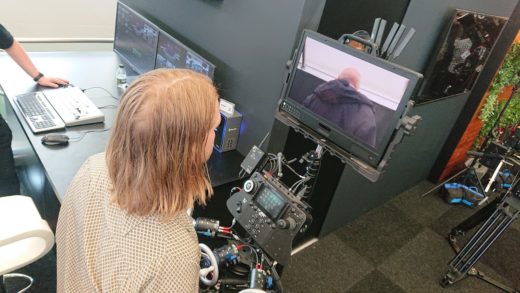
At the end of last year, reviews began to emerge of a range of displays from a company (or perhaps more accurately a crowdfunder) called Eazeye about a technology it described as a transflective LCD display. There were enticing claims about daylight readability, massively reduced power consumption, and even a reduction in the sort of blue light output that’s sometimes been posited as disturbing people’s circadian rhythm, or even as a hazard to eye safety. Eazeye’s technology has been repeatedly described as a first, and the company is now pushing a fifteen-inch desktop display
Inevitably, a caveat is about to plummet into this conversation like a main battle tank being deployed from a cargo aircraft, and it’s brought to us by the letters “R” and “E.” Transreflective LCD displays are nothing new – in fact they’re the earliest type of LCD, and we’re all used to them. Calculators and digital watches, with black segments on silver-grey or green, are transreflective LCDs.
There are lots of variations, using tinted optical films and dyes to create different colours, as the estimable Posy explains in his beautiful and fascinating YouTube video series. Some transreflective displays even had optional backlights, making them (optionally) transmissive displays. Remember Indiglo watches? What’s most useful, though, is that transreflective displays can operate using only ambient light. The LCD panel itself requires vanishingly tiny amounts of power, which is why digital watches run for months on a tiny battery. It’s probably the most common display technology on the planet, but to it hasn’t often been used for video.
Nintendo Game Boy
The difference between the sort of LCDs we’re used to on a Nintendo Game Boy and the sort of video display you’re probably staring at right now on is twofold. First, your phone or laptop has a tiny transistor behind each pixel which allows it to switch harder and faster, which makes video display less blurry and more contrasty. The term is “thin film transistor,” hence TFT, and it makes for better displays without really changing the fundamentals. Second, your display has a backlight: it isn’t designed to reflect ambient light.
What Eazeye is proposing, then, is not new. It’s a combination of two existing things: a full-colour, TFT display panel typical of a monitor or phone, with a (possibly removable) reflective panel behind it, so that it can reflect or transmit ambient light through the panel, or switch on some LEDs and operate in a more conventional backlit mode. As with so many enticingly simple ideas, the promise is perhaps not fulfilled quite as well as we might have hoped and the results are rather variable, but the Eazeye product is really just a talisman of another, more fundamental realisation.
Technology is not magic.
Being able to look at a device and, given a working knowledge of what technologies already exist, work out roughly what it is, roughly how it was made, and therefore approximately what the caveats are likely to be, is a necessary skill for modern humans. When a genuinely new techology, something like OLED displays, emerges, it takes years, and there’s often no spectacular moment of revelation. Even when there is – as with nano-spindt field emission displays, which showed up perhaps just once or twice at NAB shows in the late 2000s – it’s far from guaranteed that the new idea will go anywhere.
LCD Won
One of the challenges facing a new technology is that the pretender is, well, new – inexperienced, undeveloped, and facing an incumbent technology that’s the result of a lot more development work. Plasma, let’s not forget, was a new, exciting technology that offered a lot of advantages over LCD. Camera specialists waxed lyrical about plasma displays and their painterly, cinematic images (where’s the swear box?). Still, LCD won. OLED displays seem better-established, but it would be no surprise to anyone to find that some fundamental advancements in LCD might obviate them in just the same way.
So it’s easy to imagine a market for Eazeye’s transreflective video displays – and in fact, we don’t really have to imagine, because something similar has been done before, for Steadicam operators who care lots about framing but less about colour accuracy. Reflective LCDs will always lack consistent brightness or colour, which will change as the ambient light changes. Still, more R&D might yield better results, and while the film industry probably isn’t a big enough market to provoke that kind of R&D, cellphones might be.
The point is, though, that figuring out whether new ideas are ready for the big time is one of the joys of being a nerd, especially as we stroll into the part of the year that’s full of trade shows and people keen to persuade us that their ideas are more than just an evolution of what’s come before.
